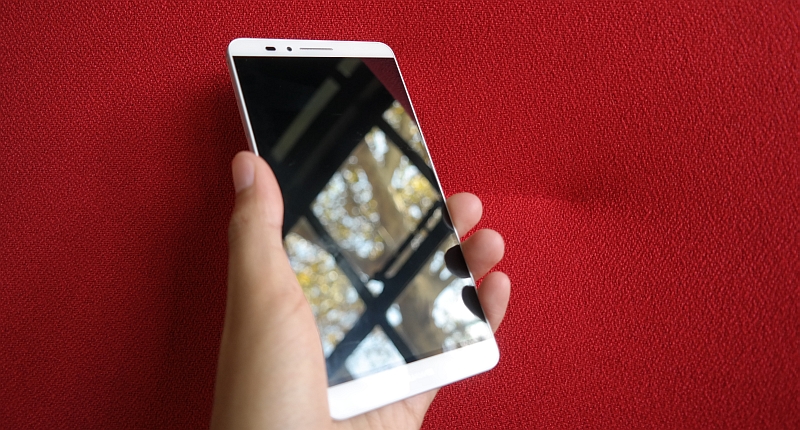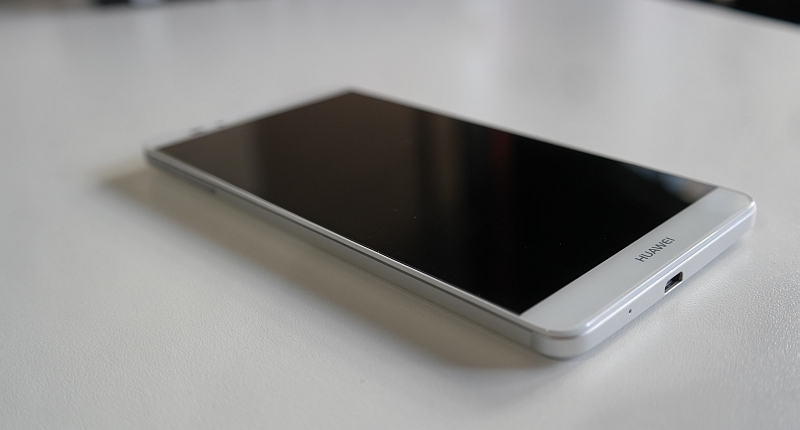SEO has entered a new era in 2026. AI tools are more powerful, users expect instant results and Google continues tightening its criteria for…
Huawei Ascend Mate 7 review: beautifully balanced

Screen size is a big factor in consumers’ purchasing decisions, especially in the past few years. Huawei really has taken this a bit too seriously with the Huawei Ascend Mate 7, its new floor board-sized phablet. But what it lacks in subtlety and understatement, it makes up in pure style and utility.
It’s no surprise that Huawei aims to compete with the big boys of the mobile devices world after it’s global financial figures have exploded by over 40% year on year, so, why not? It’s a company that’s rising the crest of a wave and here in South Africa, it’s slowly becoming a household name, alongside perennial favourites Samsung, Sony and Apple.
So, what does the Huawei Ascend Mate 7 offer prospective buyers that the iPhone 6 Plus, the Sony Xperia Z3 or the Samsung Galaxy Note 4 doesn’t offer?
Unboxing
Although I’d love to answer that question in one fell swoop, that wouldn’t make for a very good review.
Removing the massive phone from its equally large package is strangely uneventful. The box flips open rather satisfyingly (there’s none of that pressure-based lock system here), revealing the massive phone and distinct near bezel-less sides.

Beneath the phone lie the things that no one really cares about — the SIM and microSD card slot opener/remover thing, the headphones which are standard Huawei fare and the USB charger which is (as you guessed it) large as well.
Opening the box though, I did notice a strange allusion to another brand.
Having reviewed the BlackBerry Classic a few weeks ago, I couldn’t help but notice how similar the boxes were. Huawei also puts each component in its own compartment, just like BlackBerry. It’s interesting to note, and for one, BlackBerry’s packaging system isn’t a bad one to mimic, we’re just wondering how far Huawei has gone drawing inspiration from Waterloo.
Design and aesthetic
With that said, there’s nothing in common with BlackBerry when looking at the actual phone itself.

Huawei has crafted a device that is probably one of the most beautiful we’ve seen so far this year. It draws inspiration from a few other brands, including HTC and Apple, but it packages the components in a much neater and cleaner way.
Up front, the 6.0-inch Corning Gorilla Glass 3 screen dominates the device, covering well over 80% of the phone’s face. There’s a 5MP selfie camera up front, an ambient light sensor and a sliver of a call speaker beside it.
The sides house the microSD card and SIM card slots (on the left) and the power and volume rocker on the right. The buttons are in a rather awkward position, but this we’ll come to a bit later.
For now, you should also be aware of the curious indentation below the 13MP camera and flash combo above. It’s the fingerprint reader and works like an absolute charm when compared to Samsung’s reader on the Galaxy S5 at least. It’s probably in the most sensible place for a fingerprint sensor too, but it does make the phone’s backside look a bit strange.

In the lower left portion of the device, the speaker resembles a tiny grille, but it’s crammed with quality and depth for such a tiny surface area. Alongside that, we find a bunch of model numbers, and FCC lettering that really spoils the phone’s understated beauty for me. At least it’s written in silver etching, which isn’t too garish.
Internals
Considering that this phone has a 6.0-inch 1080p screen, the device doesn’t boast the pixel density of the LG G3, or the newer Samsung Galaxy S6, but it is dense enough. It’s good to know that Huawei hasn’t felt the need to keep up with the Kardashians completely. Quad HD isn’t necessary on devices, yet.
Still, there are plenty of trump cards up the device’s sleeve.

For starters, the Huawei Ascend Mate 7 features one of the strangest chipsets we’ve used in the office. The HiSilicon Kirin 925 boasts an effective nine cores, with four clocked at 1.8GHz and another four running at 1.3GHz. It can’t boast the legs that the higher-clocked Qualcomm chips (like the Snapdragon 810‘s manic 2.3GHz clockspeed), but it does boast another interesting feature — an additional ultra low energy processor clocked at a pedestrian 230MHz.
Alongside the brains, there’s 2GB of RAM, 16GB of internal memory and a host of wireless communications support, including WiFi Direct, NFC, Bluetooth 4.0 LE, WiFi 802.11a and 4G LTE. There’s also a beefier version of the device, pushing RAM and storage to 3GB and 32GB, respectively.
As far as the imaging tech goes, we’ve mentioned the two cameras — a formula that’s shared on the slightly smaller Huawei Ascend G7 too — but the primary camera boasts autofocus alongside a real-time HDR feature. There’s facial recognition built-in and 1080p recording is dispatched at 30fps.

Performance
For one, you’d expect that nine-core behemoth to run away in the performance stakes, but it doesn’t really inspire confidence, especially after the phone wakes. It stutters off the line quite often (we couldn’t quite figure out why either). Sure, it’s quick, but feels more sluggish compared to the likes of the Sony Xperia Z3, and the Samsung Galaxy S5 — both boasting Qualcomm chipsets clocked at higher frequencies. The Huawei Ascend Mate 7 didn’t exactly heat up ever actually, which is something that can’t be said of Qualcomm’s silicon.
What it lacks in sprightly straight line performance it makes up in multitasking. Opening a number of apps, switching between said apps and navigating through menus is no problem for the Huawei Ascend Mate 7. It just gobbles up whatever task you throw at it.
The lowly core also does brilliantly well to slash unneeded CPU idling, which means that, when left unattended, the phone’s battery can easily last two weeks. You’ll get an average of two days from the battery, but more intensive usage means a little over 18 hours is achievable. It’s not horrible, but I would’ve loved better battery retention for intensive tasks. If you don’t touch the device fully charged, the battery monitor gives you figures in excess of 50 days. Frankly, I can believe it. I did go without charging the phone for eight days, which is frankly mind-boggling for smartphones of today.

While the battery might be the best feature, it takes an absolute eternity to fill it up. Charging can take upwards of eight hours, but luckily the phone can be used for quite a while with a half-full reservoir.
Gaming performance is good too, thanks to the Mali T628 GPU, which welcomes HD content and high-quality games with open arms. While those purchasing this device for gaming are flawed in their decision, the Huawei Ascend Mate 7 won’t leave you disappointed.
Although there’s a 3GB RAM option, I barely ever used all 2GB available to me with a good 300MB remaining after a few hours of multitasking. This is largely down to the Emotion UI 3.0 I feel, which is one of the slickest reduxes of Android to date. It’s also Android 4.4.2 KitKat, mind.
As far as camera performance goes, there are few better cameras in the 13MP range than this snapper. Autofocus on this device is a dream, and the live HDR feature makes it easy to post-process the image should one feel the explicit need.

The front camera also features a wide-angle lens, which makes snapping “Groufies” (as Huawei enjoys calling them) really easy. I would’ve loved to see an LG-like Selfie Mode motion detecting system to remotely activate the shutter though, because holding a 180g phone in one hand is not easy.
Read more: Huawei Ascend Mate 7 has a superb set of cameras [Gallery]
Where this device does falter is returning from sleep (as I’ve mentioned above). For some strange reason, be it the CPUs adjustment from the power saving core to the actual primary cores, the phone seems to jerk and halt just prior to waking. It’s horribly annoying and taints the slick and premium feel of the UI.
While the Emotion UI 3.0 is wonderful, it also put form over function in some aspects. Some settings are buried within the settings button. Tapping and holding down the WiFi tab does not take the user to the WiFi settings folder, annoyingly. Instead, it simply switches the wireless off. Anger-inducing to say the least.

Settings are also buried in obscure submenus too, like the Advanced WiFi settings, which is below the recognised WiFi networks. It’s not easy to spot, and if you don’t know it’s there you probably never will.
Practicality
While it might be an avid performer, that enormous body has been the subject of numerous quips from friends and family. “Damn, that’s a massive phone.” “Is that a phone or a TV set?” “What on earth is the point of a phone that size?” Those were just some of the questions I’ve been asked in jest and in earnest when using the Huawei Ascend Mate 7.
Personally, I’m a sucker for large-screened phones. They are versatile, and unlike the BlackBerry Passport, which had a fairly odd profile that refused to be shoved into any normal pocket, it’s portable.

I’ve criticised the BlackBerry Classic for being overweight at 177g, but the Ascend Mate 7 is even heavier, but that’s okay. There’s a 4100mAh battery in here, almost double that of the Classic.
And like the classic, some button placements are genuinely puzzling. I’ve accidentally pressed the Power button more often than I can remember, and the volume rocker is equally idiotic. There’s no real comfortable way of holding the phone without mistakenly pressing one of these at least once, so holding this phone is as steep a learning curve as finding its settings.
Additionally, the Huawei Ascend Mate 7 is also a typist’s dream. With a large screen comes large buttons (even if the native keyboard is terrible), and that is great for someone who hates touchscreen buttons.
There will always be a niche audience looking for a larger phone, and I think Huawei has done a stellar job with the Ascend Mate 7.

Price and value
At a little over R9000, this thing is an absolute steal when compared to its competitors. It undercuts all of its major rivals and doesn’t offer less in terms of features of usability, while providing a larger screen, battery and better battery management than Samsung and Apple’s products. And, dare I say it, it’s prettier than both too.
Verdict: If you’re looking for a phone that’s around 6.0-inches, I can’t recommend anything other than the Huawei Ascend Mate 7. It’s a glorious piece of design with a beautiful screen and a great camera, it’s just a pity about the UI, strange performance quirks and active battery life issues. Still, for the money, there really isn’t anything better out there at the moment.
Score: 8.5/10


